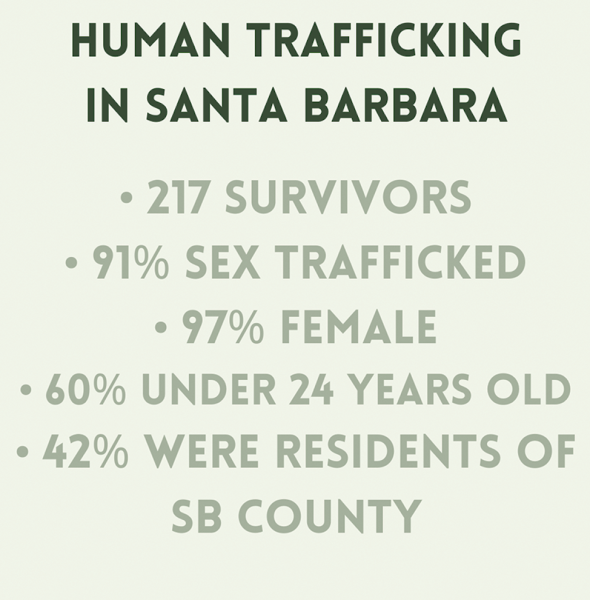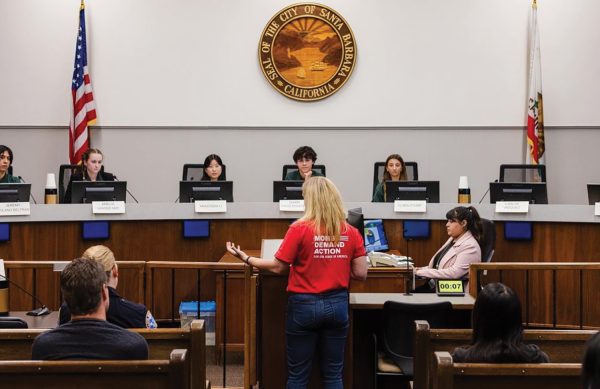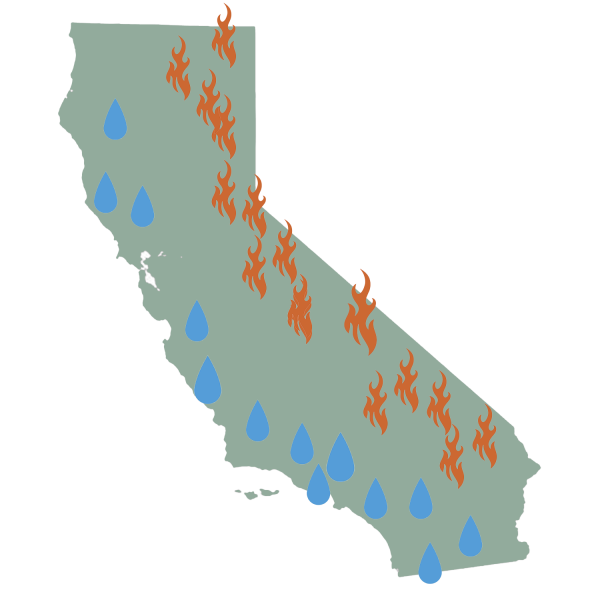The Security Shortage
As temperatures around the world climb as a result of climate change, so do the premiums of our homeowners insurance policies.
May 17, 2022
The Thomas Fire destroyed over 1000 buildings, burned over 281,000 acres of property, and inflicted over $2.2 billion worth of damage. Following this event, California Insurance Commissioner Ricardo Lara deemed many of these destructive wildfires “climate change-intensified.”
Such destructive natural disasters have provoked many negative ramifications—one of the most significant and conflictual of which is the statewide rise in prices of homeowners insurance policies.
According to Kathy Orton’s article in the Washington Post, California experienced nearly a 10% increase in average homeowners insurance premiums—3% higher than the current rate of inflation.
But this isn’t abnormal. “Insurance companies transfer risk,” local insurance broker Dan Baxter said. “Raising the monthly or yearly premiums of people who live in high-risk areas is how insurance companies ensure that their liability balances their revenue.”
This isn’t the only way insurance companies make money. “To further ensure that their funds can cover any incidents that may occur with their clients, insurance corporations make money in two ways: collecting premiums and reinvesting that revenue in other financial assets that grow over time,” Baxter said.
During the Montecito debris flows of 2018, the community of Montecito suffered from the many impacts of this phenomenon.
According to Economic Consultant Robert Niehaus’ Preliminary Impact Assessment of the Montecito Mudslides, residential property repairs would cost up to a total of $204 million.
Though it is evident that this natural disaster had many other county and region-wide effects, the sheer destruction it brought to the Montecito community was severe. “I was blown away by the devastation,” said member of the debris flow response team Ann Burgard. “The destruction was far beyond what anyone could have expected.”
Local attorney Jonathan Blinderman, who had to relocate his family following the aftermath of the debris flows said, “Lots of my colleagues have been dropped from coverage following this event. Though California law prohibits insurers from dropping clients 12 months after a claim is finalized, those who were able to keep their policies after that period of time experienced a substantial increase in their premiums.”
Additionally, unique to this particular event, it has been confirmed that the mudflows were actually a result of the Thomas Fire that swept through the Santa Ynez Mountains. “If there hadn’t been a fire, even without the amount of rain that we got, there would not have been debris flows,” Blinderman said.
According to Blinderman, in many states, if an insurance claim is attributed to two different causes, and one of those causes is not covered, then the claim can be rejected. “However, California does not permit any specific exclusion from coverage, meaning that if over 50% of the incident is caused by the covered claim, then it will be insured.”
Thus, fire insurance, for many individuals affected by this catastrophe, was accountable for covering much of the damage inflicted in this event.
According to Burgard, there was a spectrum of coverage scenarios as many Montecito residents had to negotiate with their providers to be granted coverage.
“I had friends who had to fight with their insurance companies every step of the way, and are still fighting over the final coverage,” Blinderman said. “Where you get a lot of difference is in how the different companies adjust claims.”
“All insurance policies offered by firms are fixed and specifically outlined” to prevent any loopholes that create a confusing situation regarding coverage,” Baxter said. “In this respect insurance companies don’t exactly attempt to maneuver or find loopholes in given situations to avoid compensation, but if they discover that an incident lies outside their frame of policy, the firm will not be obligated to pay.”
Nonetheless, dispute over coverage is not uncommon.
According to Katherine Chiglinsky’s article in the Insurance Journal, because of the escalated risk of insuring homes in California and other high-risk burn areas, insurers have not only been drastically raising their premiums, but dropping their clients by refusing to renew homeowners policies altogether, saying “they can no longer shoulder the losses at current prices.”
In fact, according to the California Department of Insurance, in 2019 there was a 31% increase of non-renewed coverage policies statewide and a 61% increase of non-renewed coverage policies in ZIP codes that have a moderate to high fire risk.
In Jenny Darmody’s interview with Chief Operating Officer of Aon (Multinational Insurance Company), James Platt, Platt says that risks emerging around climate, pandemic, and supply-chain cannot be assessed using traditional methods—which use time and history to understand the risk or current value of something (like property).
Because of this, the insurance industry is evolving in respect to how they analyze risk through the use of modern technology.
With the rise of what is called the Insurtech industry, private data collectors can now provide probability measures to serve as “modeling that insurers and capital providers use to feel confident putting their money behind people’s risks,” Platt said. Taking factors such as climate and other current-day issues into account, this data can prove incredibly effective.
In the long run, however, as our climate situation worsens, “It’s difficult to foresee how this could all play out,” Baxter said. “It is likely that a multitude of people will face the devastating ramifications of climate change-influenced natural disasters in the near future.”
That being said, it is completely plausible that people around the world deemed moderate to high risk at the hands of climate change could be dropped by their insurers.
One could say that this technology is either making the industry more efficient or turning it upside down, as it is slowly transitioning from people looking to buy coverage, to firms looking for specific individuals that fit their risk specifications.
“We are currently facing a multifaceted situation,” Baxter said. “We need to sustain a business model on one hand and cover unforeseen incidents on the other. If what people are looking for is more affordable coverage, the situation is not in our hands, but in those of the climate and the world.”
















